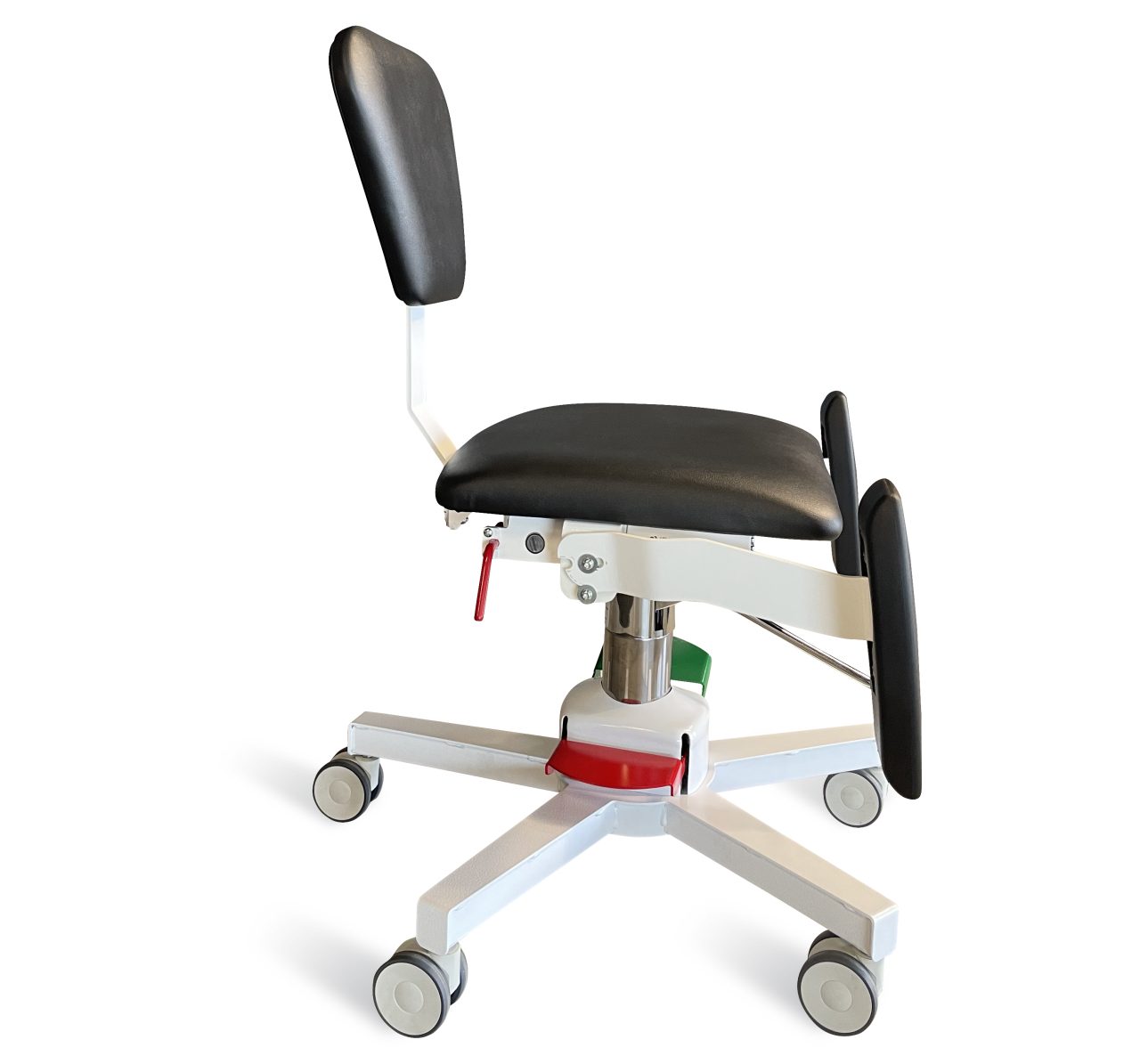Treatment chairs
What is a treatment chair?
(Available in Canada only)
A treatment chair, also known as a treatment recliner, is a piece equipment used by healthcare professionals in hospitals, outpatient clinics, and private medical practices to provide patient care. Treatment chairs perform a wide range of medical care, treatments, and examinations and offer various features and functionality depending on their applications. For example, some treatment chairs are electrically height adjustable.
Others offer a reclining back and leg rest or swivel and removable armrests. In addition, some may be equipped with accessories, such as a swivel shelf or an IV pole. With so many different features and functionalities, it is essential to consider the treatment chair’s intended use to select an appropriate model.
To prevent the risk of injury to patients and medical staff, choosing an ergonomic treatment chair is advisable.

Do you work in a specific medical field?
Whether cardiology, oncology, radiology, gynecology, ... Ibiom offers a wide range of medical equipment.
How to choose a treatment chair?
First, thinking about the intended use of the treatment chair allows you to choose a chair model that is appropriate and suitable for the treatment, both for the patient and the health care professional. For example, for treatments that last several hours, such as chemotherapy or dialysis, it is recommended to choose a treatment chair designed to provide optimal comfort over long periods. For treatments that require moving the patient from one room to another, it is wise to choose a treatment chair with wheels. To facilitate the work of the medical staff, the treatment chair on wheels should ideally be equipped with a carrying handle and a central brake system. For treatments that present a risk of vagal shock to the patient, such as blood collection, a treatment chair that can be quickly placed in the Trendelenburg position is recommended. To limit the risk of occupational injury to medical personnel, it is important that this maneuver can be performed without excessive force. Multi-purpose treatment chairs can also be used for several types of treatments or medical examinations.
Next, to ensure patient and medical staff comfort when using the treatment chair, it is essential to consider the ergonomic features of the medical equipment. For patients, ergonomic treatment chairs offer a cushioned, comfortable seat and a backrest that provides adequate lumbar support. Ergonomic treatment chairs also offer several adjustment options, allowing the patient to adopt the proper posture for treatment easily. For healthcare professionals, ergonomic treatment chairs have adjustment mechanisms, often electric, that make it easier for the patient to settle in and work in a non-restrictive posture appropriate for the examination or procedure. These ergonomic features help reduce the risk of healthcare professionals suffering an occupational injury while setting up the patient or developing a musculoskeletal disorder due to repeated poor posture. Several models of ergonomic treatment chairs are available depending on the intended use.
Do you have specific needs?
Our team of professionals at Ibiom is there to advise you and guide you towards the range of products best suited to your needs.
Do you have specific needs?
Our team of professionals at Ibiom is there to advise you and guide you towards the range of products best suited to your needs.
HEMA+ Treatment and phlebotomy chairs
The primary treatment chairs recommended for general examinations and short-term treatments are the HEMA+ treatment chair. The HEMA+ chair is frequently used in emergency departments, nuclear medicine centers, outpatient clinics, blood collection centers, and vaccination centers. It is a compact and multifunctional treatment chair. It promotes quick and easy patient positioning for various treatments and short procedures.
This ergonomic recliner offers patient comfort features such as curved armrests and integrated lumbar support, as well as healthcare professional comfort features such as the ability to place controls on the right or left side of the chair.
Treatment chairs for long-term treatments
For treatments that last several hours, such as chemotherapy and dialysis, it is important to choose a treatment chair that provides long-term comfort for the patient. The main chair recommended for this use is the TRIAD treatment chair. It is often used in oncology and nephrology centers and outpatient clinics. The TRIAD treatment chair has been designed to provide optimal comfort during prolonged sitting. This includes a viscose foam mattress designed to reduce pressure points and a power-adjustable footrest to help relieve leg cramps. The TRIAD treatment chair was also designed to optimize the work of the caregivers. It features swivel and retractable armrests for easy access to the patient. In addition, it has fixed carrying handles, four 5-inch double wheels, and a central brake system for quick and easy movement. Various accessories can also be added to the TRIAD treatment chair, including a removable swivel table or a mini exercise bike that fits directly on the footrest.
ERGO XR2 Radiology chair
Designed to improve patient positioning for x-rays in a variety of seated
positions. Reduces risks of falls during patient transfers Facilitates perfect
positioning for patients while ensuring their safety. Accelerate the examination
process thanks to the new central lock.
Other ergonomic medical equipment
For some medical treatments and examinations, the patient should be placed on a treatment table rather than in a treatment chair. It is essential to use ergonomic medical equipment designed to ensure the comfort and safety of the patient and the medical staff.
ECHO-FLEX treatment tables are ergonomic medical equipment recommended for use in all healthcare facilities, including hospitals, outpatient clinics, and private practices. ECHO-FLEX treatment tables are height adjustable and designed to allow healthcare professionals to work close to the patient, reducing the need to overextend the arm or adopt an awkward posture when examining the patient.
Want to know more about the features of our medical equipment?
Check out our blog to learn more!





